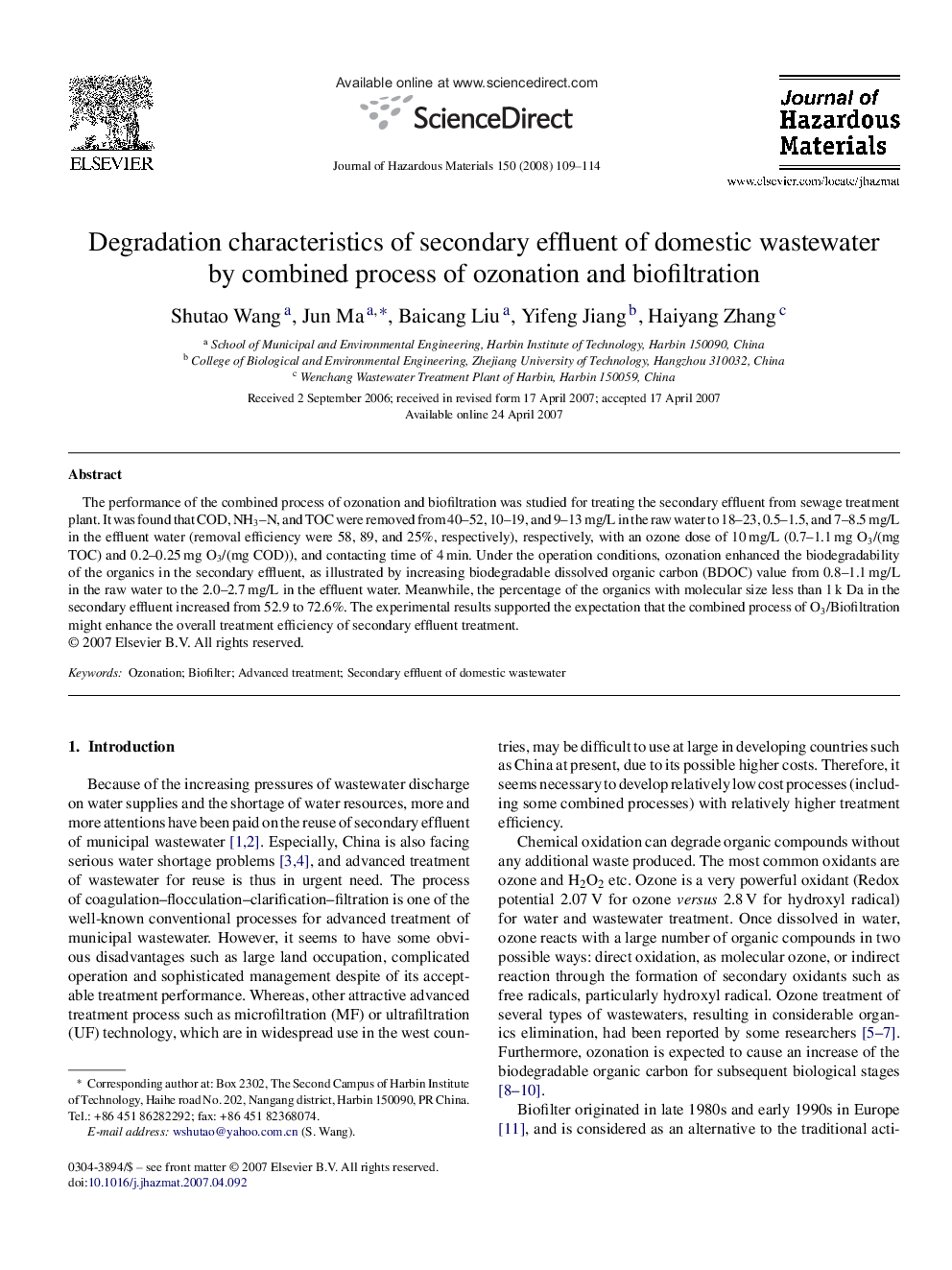| Article ID | Journal | Published Year | Pages | File Type |
|---|---|---|---|---|
| 583839 | Journal of Hazardous Materials | 2008 | 6 Pages |
Abstract
The performance of the combined process of ozonation and biofiltration was studied for treating the secondary effluent from sewage treatment plant. It was found that COD, NH3-N, and TOC were removed from 40-52, 10-19, and 9-13Â mg/L in the raw water to 18-23, 0.5-1.5, and 7-8.5Â mg/L in the effluent water (removal efficiency were 58, 89, and 25%, respectively), respectively, with an ozone dose of 10Â mg/L (0.7-1.1Â mg O3/(mg TOC) and 0.2-0.25Â mg O3/(mg COD)), and contacting time of 4Â min. Under the operation conditions, ozonation enhanced the biodegradability of the organics in the secondary effluent, as illustrated by increasing biodegradable dissolved organic carbon (BDOC) value from 0.8-1.1Â mg/L in the raw water to the 2.0-2.7Â mg/L in the effluent water. Meanwhile, the percentage of the organics with molecular size less than 1Â k Da in the secondary effluent increased from 52.9 to 72.6%. The experimental results supported the expectation that the combined process of O3/Biofiltration might enhance the overall treatment efficiency of secondary effluent treatment.
Keywords
Related Topics
Physical Sciences and Engineering
Chemical Engineering
Chemical Health and Safety
Authors
Shutao Wang, Jun Ma, Baicang Liu, Yifeng Jiang, Haiyang Zhang,
